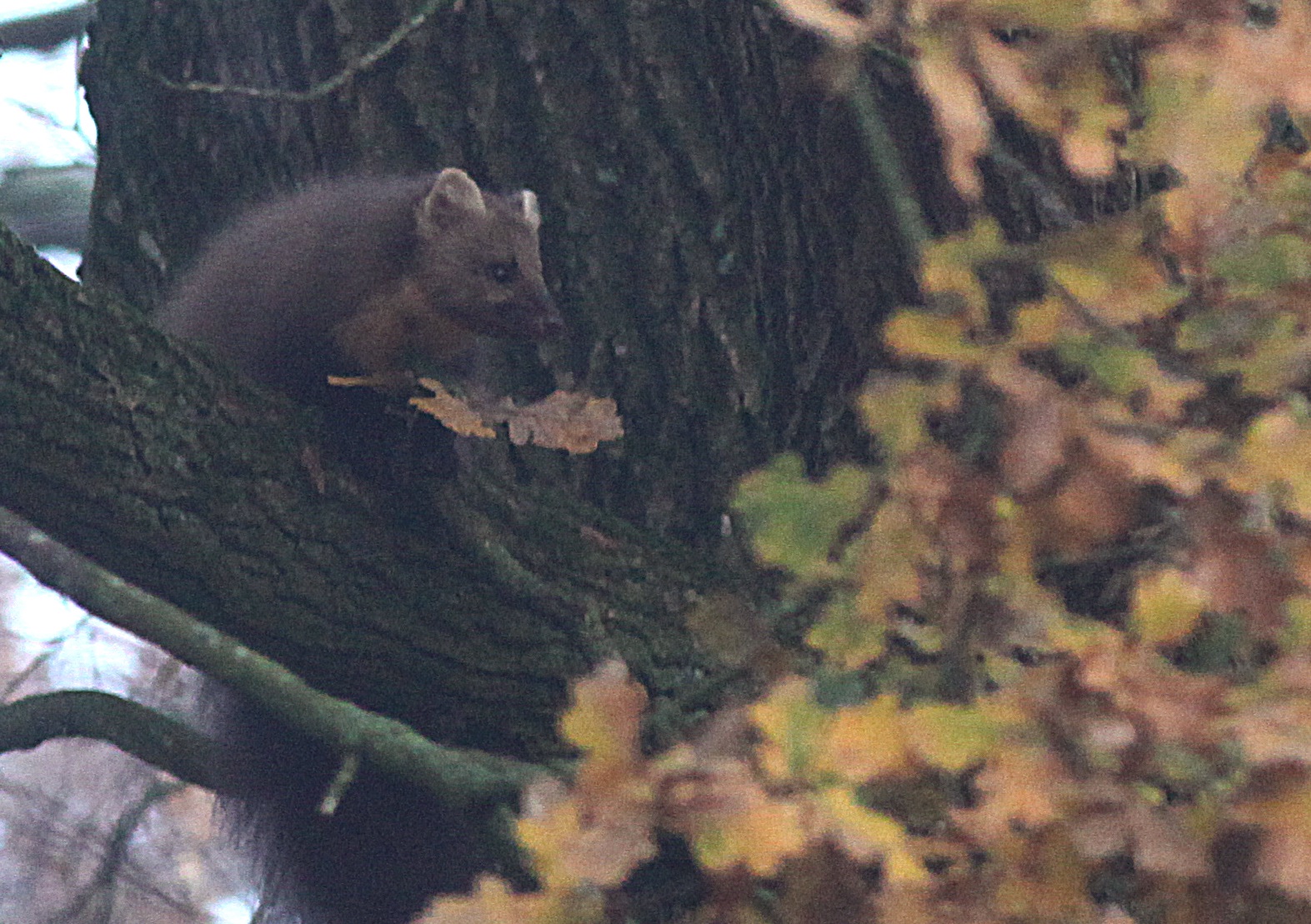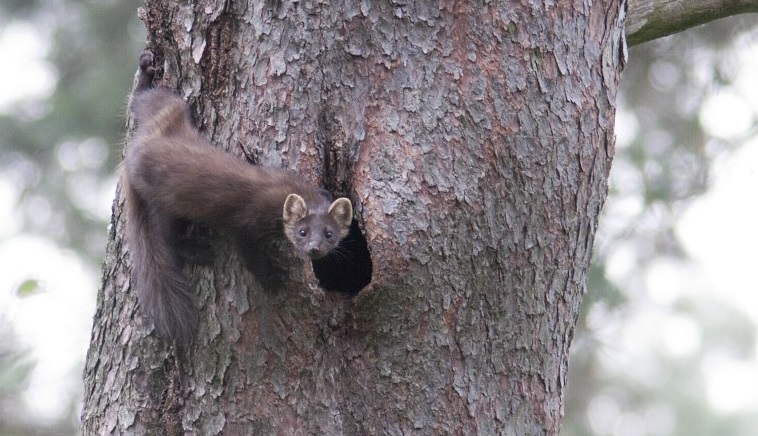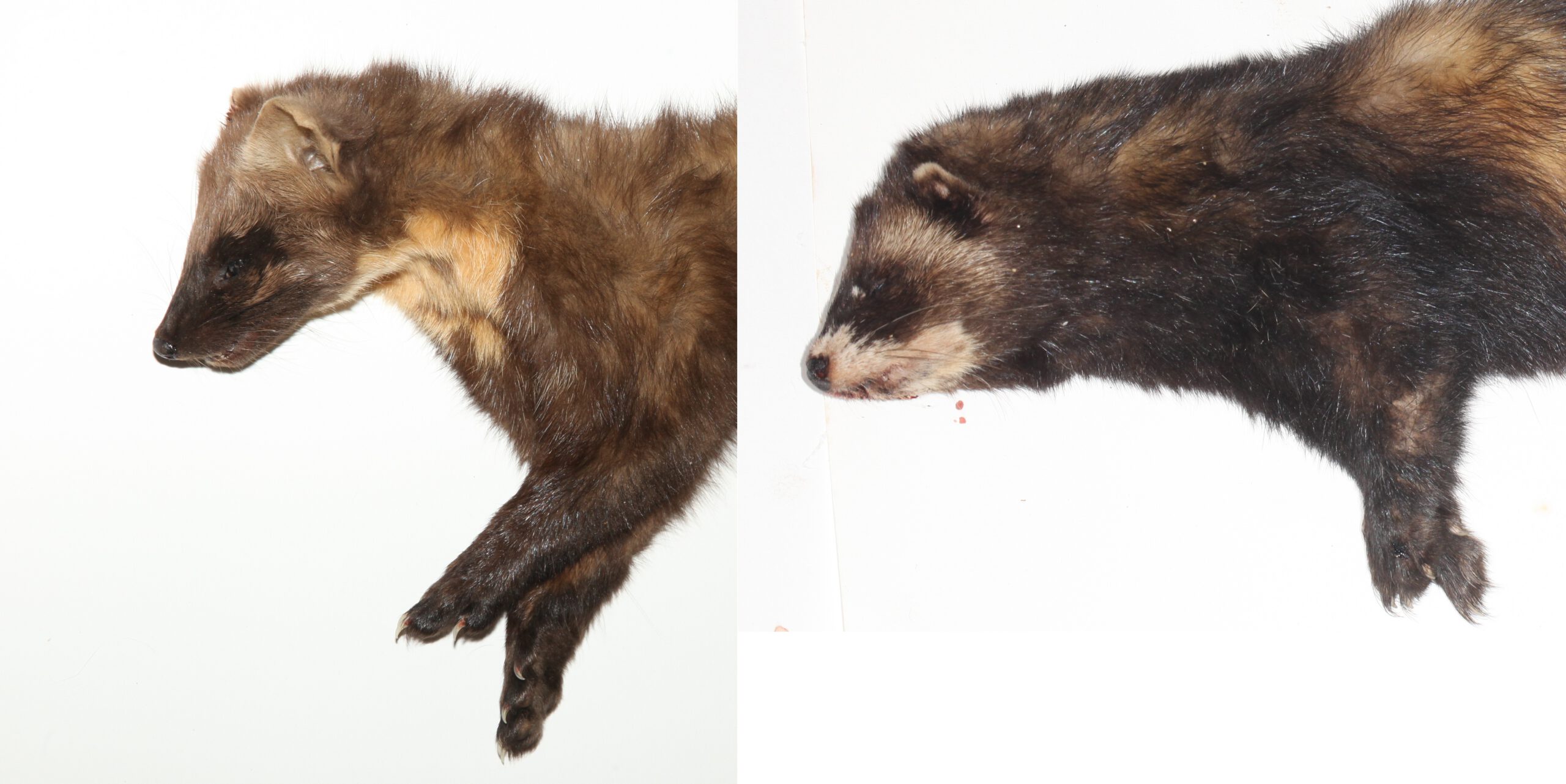How to roam trees without having specialised climbing gear?
Up and down
Pine martens know how to make the most of their forest habitat. They are carnivores adapted to an arboreal life style, but they also search the forest floor, and will supplement their diet of small mammals and birds with insects and berries whenever such opportunities occur.

This versatility makes that they can thrive in many different forest ecosystems, and in Europe they can be found from warm regions such as the Mediterranean up to the northern Taiga forests.
Amateurish climbers?
To enable climbing and running through the trees, large and sharp nails could be expected, similar to a black woodpecker. However, this is not at all the case: the nails are not as high and strongly curved as would suit a tree wanderer. Also, the feet of pine martens do not have the cushioning to improve grip, as seen in red squirrels. So, although they are good climbers, they do not have the proficiency of woodpeckers and squirrels.

Though, relative to their body size and compared to other martens, like polecats (which forage on the ground only), they have a low body mass, which likely helps them to move about among branches.

Pine martens are slender-built animals, which would also help them to crawl into spaces to either find prey or to rest and nest. They prefer (tree) cavities, but they can also reside in or on large unoccupied nests of raptors.
As they do not hibernate, pine martens must find enough food in the forest also during winter and early spring, when food is relatively scarce. They have webbed feet which may aid in galloping on snow, but perhaps the webbing is even more important to create additional grip when they run the branches of a tree.

To find food, they widely roam their surroundings, with emphasis on the twilight hours and during night-time. They can see, smell or hear potential prey, as they have acute senses. They also have a strong bite to kill prey and teeth to clip the feathers of any prey bird, which may even be as large and powerful as a northern goshawk.
Continue reading
Price to pay: small prey
Although a northern goshawk is a significant (but exceptional) prey in size, in body mass it does not compare yet with a polecat catching a rabbit. So typically, pine martens do not get as large prey as polecats do, which may be the price to pay if you want to explore the canopies. This difference between these two marten species can be seen from the neck musculature, which is massively developed in polecats (right) to carry large prey, but in comparison poorly developed in pine martens (left).

Compared to polecats, pine martens have less muscles attached to their front legs and more to their hind legs. As pine martens need to jump from one tree to the next, strong hind legs are a necessity, more so than in a polecat. Forceful front limbs may have been convenient as well for tree climbing or to break open woodpecker nests, for example.
However, they also use their front legs to hoist young birds from nest cavities, and to do so, thinner front limbs could be required to manoeuver even when inserted into a narrow entrance. Too strong musculature of the front limbs may lower the efficiency of this foraging technique.

